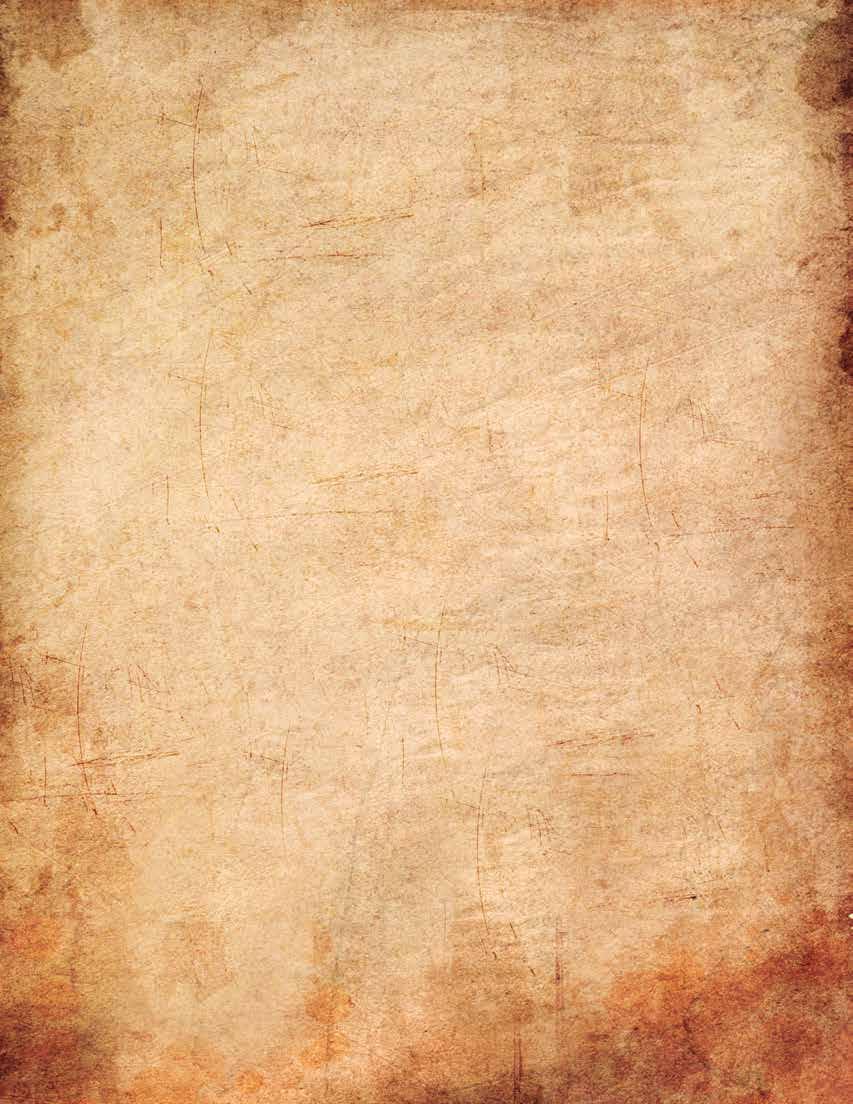
20 minute read
Brief Notes on One More …
Conyza canadensis (L.) Cronquist, (Canadian fleabane, Canadian horseweed) is a North American plant. After early settlers learned that various indigenous peoples used it for a variety of medical ailments, they sent it to Europe, where it spread quickly. By 1653 records from the Botanical Garden in Blois, in central France, identified the plant there. English records mention the plant in 1690 (Bown, 2001).
In contrast to alfalfa’s lab developed resistance to herbicides, Canadian fleabane is the “first broadleaf weed to evolve glyphosate resistance in agriculture and is also the most widely distributed glyphosate-resistant weed in the United States and the world” (Peng et al., 2010). Peng and his fellow researchers have used the plant to design a gene sequencing tool, the first step in tracing such a genetic evolutionary step by a weedy herb.
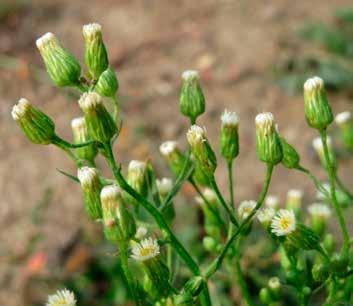
Peng, Yanhui et al. 2010. Pest Management Science. 66(10: 1053-62. Accessed January 19, 2022. Available from https://pubmed.ncbi.nlm.nih.gov/20715018/
Canadian fleabane growing near Saabrücken, Germany
Photo credit: AnRo0002 conclusion; the plant does have the chemical components, i.e., thymol, to support its success in its various traditional medicinal uses. The authors of each review recommend further studies and clinical trials to determine appropriate dosing and to compare outcomes with available medications (Jeet et al., 2012; Bairwa et al., 2012)
Another research protocol compared a topical cream (T. ammi 10%) and a placebo for efficacy in controlling neuropathic foot pain and burning. The authors reported a significant decrease in the sensation of pain, burning, tingling, and numbness for the patients using the T. ammi cream as compared to the placebo users (Petramfar et al., 2016).
In the kitchen, ajowan seeds flavor curries, breads (naan), and snacks (Fern, 2022b). Seeds may be used whole or ground, and added, with a light touch, to spice blends or at the end of cooking a dish. As commonly recommended in Indian cooking, warming the seeds in ghee or a dry pan will enhance the depth of flavor.
Bown notes the use of seed extracts in soaps and cough medicines (Bown, 2001), thus completing the required triad of medicinal, culinary, and economic uses.
The Herb Society of America has long used John Parkinson’s words “for use and for delight” to envision our use and study of herbs. These six plants, pulled from a list of over one hundred, represent herbs that have delighted us with their roots, leaves, flowers, and seed and that have proven useful for ourselves, our livestock, and other visitors to our gardens and meadows.
Literature Cited
Abelmoschus moschatus Medik. 2017. World flora online. Accessed January 14, 2022. Available from www.worldfloraonline.org/taxon/wfo-0000510888
Bairwa, Ranjan, R.S. Sodha, and B.S. Rajawat. 2012. Trachyspermum ammi. Pharmacognosy Reviews. 6(11) 56-60. Accessed January 15, 2022. Available from ncbi.nlm.nih. gov/pmc/articles/PMC3358968/
Bown, Deni. 2001. The Herb Society of America new encyclopedia of herbs and their uses. London: Dorling Kindersley Limited.
Bremness, Leslie. 1994. Eyewitness handbook herbs. London: Dorling Kindersley.
Burkhill, H.M. 1985. The useful plants of west tropical Africa, Vol. 4. Accessed January 24, 2022. Available from https://plants.jstor.org/compilation/abelmoschus. moschatus?searchUri=
Bylka, Wieslawa, Paulina Znajdek-Awiżeń, Elżbieta Studzińska-Sroka, and Malgorzata Brezezińska. 2013. Centella asiatica in cosmetology. Postepy Dermatol Algerol. 30(1): 46-49. Accessed January 19, 2022. Available from https://www.ncbi.nlm.nih.gov/pmc/articles/PMC3834700/
Celtnet Spice Guide. 2013. Musk mallow. Accessed January 9, 2022. Available from https://web.archive.org.web/20130319052541/http:??celtnet.org.uk/recipes/spice-entry. php?term=Musk%20Mallow%20Seeds (OR use the link available in the bibliography at https://en.wikipedia.org/wiki/Abelmoschus_moschatus)
Chisvert, Alberto et al. 2018. Perfumes in cosmetics. In Analysis of cosmetic products (second edition). Accessed January 24, 2022. Available from https://www.sciencedirect. com/topics/chemistry/musk-ambrette
Chong, Nyuk Jet and Zoriah Aziz. 2013. A systematic review of the efficacy of Centella asiatica for improvement of the signs and symptoms of chronic venous insufficiency. Evid Based Complement Alternat Med. 2013: 627182. Accessed January 19, 2022. Available from https://www.ncbi.nlm.nih.gov/pmc/articles/PMC3594936/
Literature Cited (continued)
Cox, Paul A. 2013. Herbals and medicinal plants. In Encyclopedia of biodiversity (Second edition). Accessed January 29, 2022. Available from https://sciencedirect.com/topics/ phamacology-toxicology-and-pharmaceutical-science/filipendula
Culpeper, Nicholas. 1985. Culpeper’s complete herbal. Ware, UK: Omega Books Ltd.
Cunningham, Scott. 1988. Cunningham’s encyclopedia of magical herbs. St. Paul, MN: Llewellyn Publications.
Duke, James A. 1997. The green pharmacy. Emmaus, PA: Rodale Press.
Economic Research Service, United States Department of Agriculture. 2017. Genetically modified alfalfa production in the United States. Accessed January 14, 2022. Available from https://www.ers.usda.gov/amber-waves/2017/may/genetically-modified-alfalfa-production-in-the-united-states/ php?id=Abelmoschus+mochatus php?id=Trachyspermum+ammi
Fern, Ken. 2022a. Abelmoschus moschatus. Tropical Plants Database. Accessed January 20, 2022. Available from https://tropical.theferns.info/viewtropical.
Fern, Ken. 2022b. Trachyspermum ammi. Tropical Plants Database. Accessed January 26, 2022. Available from tropical.theferns.info/viewtropical.
Garland, Sarah. 1979. The complete book of herbs and spices. New York: The Viking Press.
Gul, Mir Z. et al. 2001. Evaluation of Abelmoschus moschatus extracts for antioxidant, free radical scavenging, antimicrobial and antiproliferative activities using in vitro assays. BMC Complement Alternative Medicine. Pp. 11-64. Accessed January 19, 2022. Available from https://www.ncbi.nlm.nih.gov/pmc/articles/PMC3201038/
Heilmeyer, Marina. 2007. Ancient herbs. Los Angeles: Getty Publications.
Hilty, John. 2019. Yellow sweet clover. Illinois Wildflowers. Accessed January 10, 2022. Available from www.illinoiswildflowers.info/weeds/plants/yl_swclover.htm
Jeet, Kamal et al. 2012. Trachyspermum ammi: a comprehensive review. International Research Journal of Pharmacy. 3:133-138. Accessed January 25, 2022. Available from researchgate.net/publication/237168900_Trachyspermum_ammi_A_comprehensive_review/
Levetin, Estelle and Karen McMahon. 2007. Plants & society 5th edition. New York: The McGraw-Hill Companies, Inc.
Leyel, Mrs. C.F. 1986. Herbal delights. New York: Gramercy Publishing Company.
Lindley, John. 1838. Flora medica: a botanical account of all the most important plants used in medicine. London: Longman, Orme, Brown, Green, and Longman. Accessed January 14, 2022. Available from https://www.biodiversitylibrary.org/page/17801619 OR www.biodiversitylibrary.org/item/59337/#page/164/2up
Lokanathan, Yogeswarab, Norazzila Omar, Nur Nabilah Ahmad Puzi, Aminuddin Saim, and Ruszymah Hj Idrus. 2016. Recent updates in neuroprotective and neurogenerative potential of Centella asiatica. Malaysian Journal of Medical Science. 23(1): 4-14. Accessed January 19, 2022. Available from https://www.ncbi.nlm.nih.gov/pmc/articles/ PMC4975583/
Missouri Botanical Garden. n.d. Filipendula ulmaria. Accessed January 14, 2022. Available from https://www.missourbotanicalgarden.org/PlantFinder/PlantFinderDetails. aspx?taxonid=286386
Moerman, Daniel L. 1998. Native American ethnobotany. Portland OR: Timber Press. Oudhia, Pankaj. 2001. Muskdana or ambrette (Abelmoschus moschatus): aromatic and medicinal. Accessed January 14, 2022. Available from https://hort.purdue.edu/ newcrop/CropFactSheets/muskdana.html
Petramfar, Peyman, M. Moein, S.M. Samani, S.H. Tabatabaei, and M.M. Zarshenas. 2016. Trachyspermum ammi 10% topical cream versus a placebo on neuropathic pain, a randomized, double-blind, placebo-controlled trial. Neurological Science. 37(9): 1449-55. Accessed January 20, 2022. Available from https://pubmed.ncbi.nlm.nih. gov/27166709/
Petruzzello, Melisa. 2018. tossa jute. London: Encyclopedia Britannica. Accessed January 22, 2022. Available from https://www.britannica.com/plant/tossa-jute
Petruzzello, Melisa. 2019. Musk mallow. London: Encyclopedia Britannica, Inc. Accessed January 22, 2022. Available from https://www.britannica.com/plant/musk-mallow Stuart, Malcolm (ed). 1979. The encyclopedia of herbs and herbalism. New York: Crescent Books.
Sumner, Judith. 2019. Plants go to war: A botanical history of World War II. Jefferson, NC: McFarland & Company, Inc.
United States Department of Agriculture National Resources Conservation Service. 2008. Yellow sweetclover & white sweetclover. Accessed January 25, 2022. Available from https://nrcs.usda.gov/Internet/FSE_DOCUMENTS/nrcs144p2_043029.pdf
Widodo, Sri Hajati. 1999. Abelmoschus moschatus Medikus. In: L.P.A. Oyen and Nguyen Xuan Dung (eds.): Plant Resources of South-East Asia No 19: essential-oil plants. PROSEA Foundation, Bogor, Indonesia. Database record: prota4u.org/prosea. Accessed January 20, 2022. Available from https://www.prota4u.org/prosea/view.aspx?id=76
Wojnarowska, F. and C.D. Calnan. 1986. Contact and photocontact allergy to musk ambrette. British Journal of Dermatology. 114(6): 667-75). Accessed January 19, 2022. Available from https://pubmed.ncbi.nlm.nih.gov/3718861/
Woodward, Marcus, ed. 1969. Leaves from Gerard’s Herball. New York: Dover Publications, Inc.
Bibliography
Mandandbur, NP. Plants and People of Nepal. Portland, Oregon: Timber Press. 2002.
The Research Institute for Fragrance Materials. The RIFM data base is a comprehensive, worldwide source of toxicology data, literature and general information on fragrance and flavor raw materials. Available at https://www.rifm.org (Note: The connection for this site is not secure.)
United States Department of Agriculture Forest Service. Range Plant Handbook. Washington, DC: US Government Printing Office. 1937.
The Herb Society of America has a modest but enviable collection of rare herbals and titles of botany and natural history. The collection speaks to the inspirational nature of learning, as well as the studious and inquisitive nature of members who have donated these rare titles or funded their purchase.
Beginning in late 2019, I began cataloging forty of the rare books that The Herb Society of America has stored in the Special Collections locked vault at the Holden Forests & Gardens Warren H.Corning Library, Kirtland, Ohio. While these titles had appeared in The Society’s online catalog, their brief records often didn’t have full physical descriptions or notes about provenance. The project included editing item records, the addition of an ownership statement, the addition of the physical description including bindings, inscription, etc., and the addition of a link to a digitized copy of the same or similar edition of the book where possible. The project included collation to verify that the plates in the volumes were complete and intact. The Holden Forests & Gardens online catalog now includes these forty titles, insuring their availability to researchers with similar interests to our members.
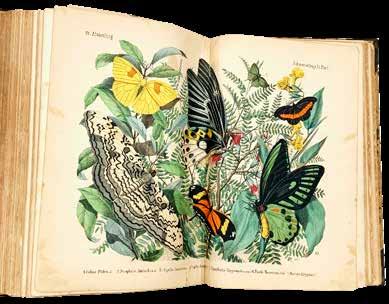
Rare books in the collection have a date range from 1601 to 1892, some with original bindings and some with modern rebinding made possible through donations by members. These diverse volumes often include lush, colorful illustrations created as woodcuts, hand-colored or color-printed plates. These valuable rare books have come to the library through generous gifts of members and other donors including Elizabeth Wade White, Walter and Sally Thwing, Mr. and Mrs. Roland Remmel, Christopher Friedrichs, Helen Darrah, the New England Unit, and Leola Tiedt. Additionally, restoration of the beautiful Botanologia The English herbal: or, History of plants of 1710 by William Salmon was contributed by the gift of Ruth Remmel of the Arkansas Unit. Restoration included rebinding the book in blind stamped leather with raised bands and a red gilt spine label.
The Society completed restoration of several other books in the 1980s, including An history of plants and trees, natives Britain, cultivated for use, or raised for beauty, by John Hill, MD, printed in 1756. Harcourt Bindery provided conservation and preservation treatment in 1982, involving having the pages washed, deacidified, and rebinding the book in leather. Harcourt Bindery also treated Medicina Britannica: or, a treatise on such physical plants, as are generally found in the fields and gardens in Great Britain by Thomas Short, published in 1746.

The oldest book in this rare book collection is The historie of the world : commonly called the natural historie of C. Plinius Secundus, translated into English by Philemon Holland and published in London by Adam Islip in 1601. Originally written in Latin, this translation features interesting descriptions of the natural world and beautiful, intricate illustrations. Its use for researchers of herbs and herb lore come as the “encyclopaedist Pliny the Elder... mentions a number of writers of herbals who provided pictures of the plants above descriptions of their medicinal effects.”
(Leith and The Recipes Project, 2015).

The titles in the collection fall into categories such as herbals, guides for dying and brewing, and several florilegia. Two titles in The Society’s Rare Book Collection have women authors: The romance of nature, or, the flower-seasons illustrated, by Louisa Anne Twamley (Mrs. Charles Meredith) from 1836, and The spirit of the woods, illustrated by coloured engravings by the author of "The moral of flowers” by Rebecca Hey (Mrs. William Hey), 1837.
As the Special Collections Department at the University of
Glasgow notes in their online exhibit of female illustrators, Twamley (or Mrs. Meredith) was “an author, artist and botanist, was born in Birmingham but lived for much of her life in Tasmania. As a conservationist, Meredith wrote several volumes on the flora and fauna of Tasmania and lobbied the parliament to have acts passed in order to protect the wildlife of Tasmania. Meredith both wrote and illustrated of The romance of nature, which was intended as an elegant gift book and was dedicated to William Wordsworth. The illustrations are hand coloured lithographs.” (Greenaway and Cardon, n.d.).
The Marginalian, a long-running blog written by Maria Popova, says of Rebecca Hey, and other women authors of her time, “... the very few female authors published in the nineteenth century, many appeared under male pseudonyms or ungendered initials.” Thus, Mrs. William Hey is Rebecca Hey— a poet, painter, and amateur naturalist (Popova, 2020). Hey did publish Sylvan Musings, or, The Spirit of the Woods in 1849, under her own name. The Society’s book only offers the writer’s name as “author of The moral of flowers.” (Lest we forget, all women of scientific bent were viewed as amateurs by virtue of being excluded from both formal higher education and the scientific societies of the time.)
The floral keepsake: with thirty engravings elegantly colored from nature, edited by John Keese and published in 1850 also falls into the category of florilegia. This book contains delightful illustrations and full descriptions of floral specimens.
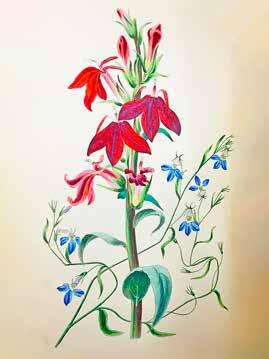
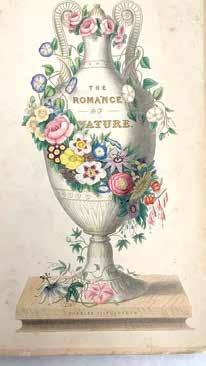
British Herbals and Guides
The majority of the HSA rare book holdings were published in London and include the field’s most famous authors such as John Gerarde, William Salmon, and John Parkinson. Gerarde’s texts were well known and popular during his lifetime with his Herball, or General Historie of Plantes, valuable for plant identification and corrections to earlier names. The text includes over 2,500 botanical woodcuts.
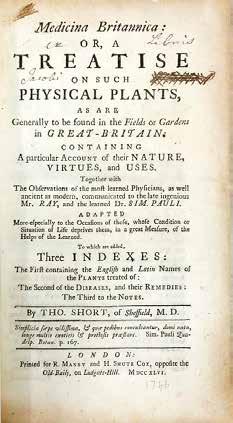
The two works by William Salmon owned by HSA are The family dictionary; or, Houshold companion of 1696 and Botanologia The English herbal: or, History of plants of 1710, both printed in London. These works include information on cooking, seasoning, making wine, and ciders, and the “virtues and uses of the most usual herbs and plants, their roots, barks, leaves, flowers, fruits, seeds” (Salmon, 1696).
John Parkinson’s famous Paradisi In Sole, printed in London in 1656, includes over 1,000 entries on plants which grow in England and is illustrated with wood engravings. The work (Parkinson, 1656) includes, “all manner of herbs, roots, and fruits, for meat or sawce used with us; With the art of planting an orchard of all sorts of fruitbearing trees and shrubs ...; Together with the right ordering, planting and preserving of them, with their select vertues.”
American Herbals and Guides
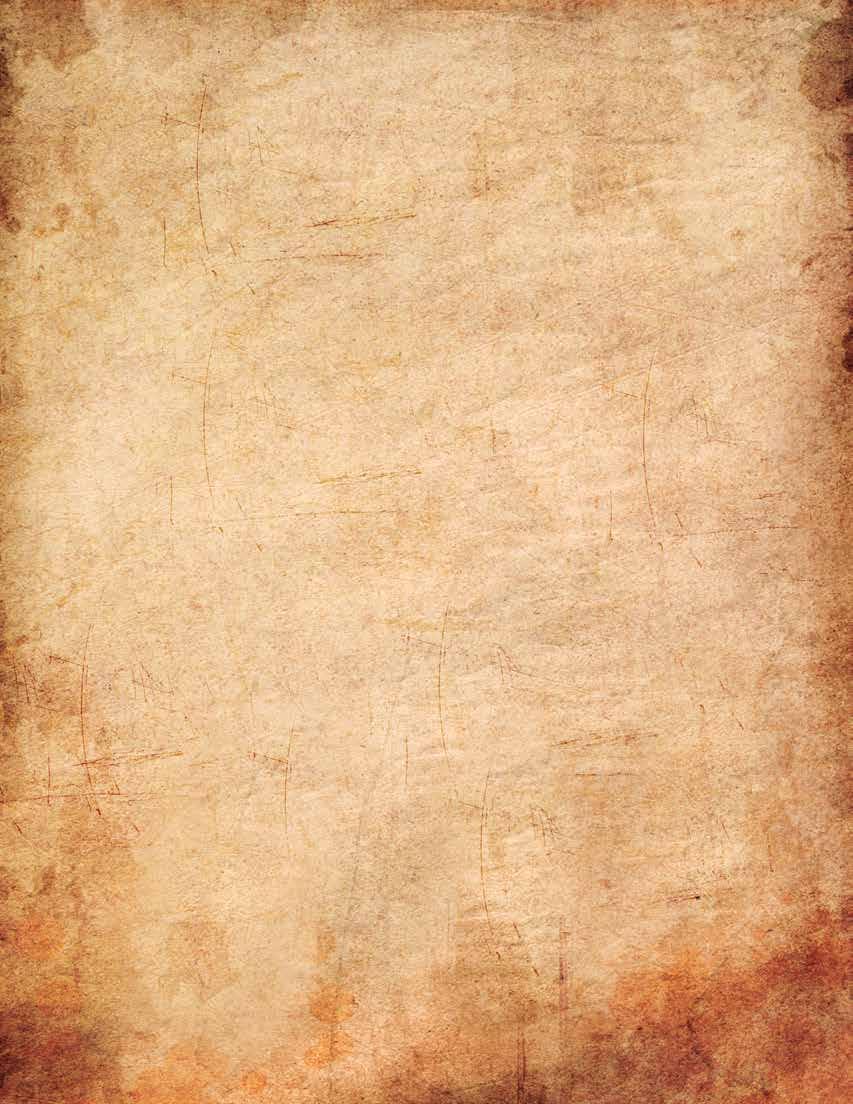
The Society’s rare book collection has fourteen titles printed in the United States, most in Boston, Philadelphia, or New York. These titles may prove to be the most interesting to readers today as they contain illustrations and early descriptions of plants from our own neighborhoods, backyards, parks, and gardens. Authors of note are Jacob Bigelow, Constantine Samuel Rafinesque, and Charles Frederick Millspauge.
Both the American medical botany, published in three volumes between 1817-1820 and A treatise on the materia medica, intended as a sequel to the Pharmacopoeia of the United States of 1822 by Jacob Bigelow were significant contributions to medical botany (McManus and Countway, n.d.).
Moreover, Bigelow innovated printing technology to create the vibrant plates included in his works. As Steven Foster details, “Bigelow’s American Medical Botany represents not only a milestone in the history of North American medicinal plant literature, but also an important landmark in printing technology, as the first American book with printed color plates produced by a method of Bigelow’s own ingenuity.” (Foster, 2004).
The Medical flora; or, Manual of the medical botany of the United States of North America by Constantine Rafinesque provides a wealth of information on the plants we may find locally (Rafinesque, 1828-1830). It features, as the title indicates, “a selection of above 100 figures and descriptions of medical plants, with their names, qualities, properties, history,& c: and notes or remarks on nearly 500 equivalent substitutes.”
Rafinesque traveled widely and revolutionized the classification of plants in the United States (Hanson 2021).
Charles Millspaugh’s American medicinal plants of 1887 contains a significant description of cannabis. His early description of Cannabis sativa, or Indian hemp, details the history and use of the herb worldwide. His description includes names held in other countries such as in India, where Cannabis sativa was called, “Leaf of Delusion,” “Increaser of Pleasure,”
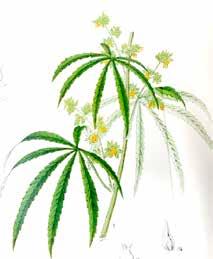
“Laughter Mover,” and “Cementer of Friendships” (Millspaugh, 1887).
Another book printed in America, The English physician enlarged: containing three hundred and sixty-nine receipts for medicines made from herbs by Nicholas Culpeper, printed in Taunton, MA, in 1826 is a very significant copy. An earlier edition of his The London Dispensatory was one of the first works of its nature printed in the colonies (Tennent, n.d.).
Less well known, perhaps, is botanist Peter Good’s Family Flora of 1845 which reveals interesting facts about indigenous and nonnative plants and flowers with their natural history and medical properties (Good, 1845). This book makes use of lovely handcolored plates. His description of the thorn apple, Datura stramonium, or Jamestown weed, indicates it is considered a nightshade. He writes that it was originally believed to be indigenous to the Americas but was in fact first introduced to England from Constantinople. Good states it “was probably a native of Persia or India, and has spread to Europe, Africa, and America. It has been supposed to be a native of North America, but it has appeared only since its colonization. The Indians call it the White Man’s plant” (Good, 1845). Additionally, he notes that it is common in fields, around buildings, and farms. He records that it is both a narcotic and a stimulant and has been used to treat both mania and epilepsy. It is said here to cure inflammatory ulcers and is recommended in “nymphomania to cure venereal disease.”
The collection includes a rare book on natural history, a very scarce early edition owned only by three other libraries—all in Europe. This is Naturgeschichte des Thierreichs... by C. F. A. Kolb., published in Stuttgart in 1868. It is the most beautiful book in the collection, in my opinion. Donated by HSA member Leola Tiedt, it includes eighty full-page color plates of all varieties of classifications of mammals and insects. The handcolored copper plate engravings are vibrant and breathtaking. Created by artist Friedrich Specht, a German painter and natural history illustrator born in 1839, the illustrations depict animals and insects, including assorted pollinators.
Most distinct perhaps is The American Practical Dyer’s Companion by Henry Clay Bird, published in 1882. This book describes, and provides recipes for, over eight hundred dyes to be used on silks, wools, flannel, and more. The text includes varied colorful samples of thread and fabrics which are adhered directly on the pages of the book. The use of plants for dyes makes this handbook unique.
The old root and herb doctor, or, The Indian method of healing, by Dr. John Goodale Briante provides unique content because, as the title page of this 1870 publication reveals, the book has “directions for preparing and using their most valuable remedies, as used by him, in his extensive practice throughout the eastern and middle states.” Furthermore, Briante describes his long association with indigenous healers and practitioners on the title page of the work stating, “Dr. John Goodale Briante, for many years with the Saint Francis Tribe of Indians; also, for several years with the Pottawattamies and other
The Value of Provenance
Provenance, or the source and history of ownership, is an important part of rare book collecting and appraisal (Ostdick, 2017). Oftentimes documentation exists about previous owners of a book and the source of a donation or purchase. At other times clues about a book's previous owner(s) can be discerned from annotations, marginal notes, or additions to a particular title. The Herb Society of America’s rare book collection has one title with copious handwritten holographic additions that include poems and recipes—including one for poison. This Nicholas Culpeper 1794 edition of the English Physician features a dedication dated "In the Year of Masonry 5798" (i.e., 1794) and
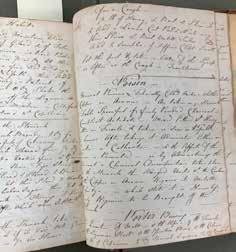
The Herb Society of America
Book Collector, Donor, and Dealer:
Elizabeth Wade White, one of the earliest members of The Herb Society of America, (Herb Society of America 2015) is noted to have donated seven books to the HSA Library, including four of the valuable rare books now stored at the Warren H. Corning Library at the Holden Arboretum. Several of these items carry her bookplate, “Ex libris Elizabeth Wade White,” and include the notes about the donation or the name of her home, “The Patch,” the name referring to a “vegetable patch” (Jordan, n.d.).
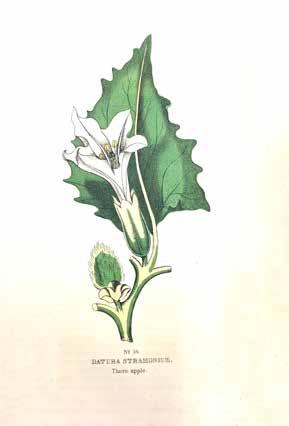
Elizabeth Wade White, born in 1906 was an author of The Life of Anne Bradstreet: The Tenth Muse, published in 1971. Her extensive correspondence about herbs and gardening, including letters to Eleanour Sinclair Rohde, show her enthusiasm and commitment to the new Herb Society and its initiatives. Her biographical description included with her papers held at the New York Public Library (Jordan, n.d.) indicates that, “in the fall of 1945, she moved to her grandmother's house in Middlebury, ‘The Patch,’ with the woman who would become her life partner, Evelyn Holahan.”
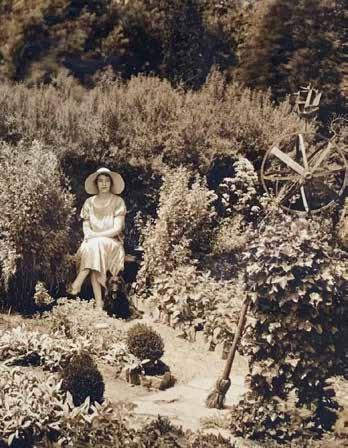
Holograph recipe. Rear free endpapers, English physician, and complete herbal, Nicholas Culpeper, 1794 includes [22] pages of handwritten recipes bound-in after the text of volume 2, including recipes for various paint, wines, and cures for poison. Also included are lyrics to the song, "Love me and the world is mine."
Moreover, this biography notes that “at the close of the 1940s White and Holahan started White & Holahan, Books, a used and rare book business run out of their home.” This helps explain her experience in recognizing the value of the books she later donated to The Herb Society of America.

Culpeper’s 1675 Pharmacopœia Londinensis; or, The London dispensatory also contains holographic entries including, “Egyptian Thorn page 39 see Garrards / Treacle Mustard page 33 for perge / Ash Keys page 45 to make the body lean / Cinnamon page 58 to be taken with the juice of Water creases for the scurvey / Knot Grass for sick hogs page 23." On the free endpapers he writes, "How to make the powder called Diaperte: it is true of my knowledge for I have booth made it and used it but there are few that can come at the ingreedence...” (Culpeper, 1675).

Additions such as these indicate that the books were regularly used and adapted for the common needs of the owner, referencing other books in her/his library and common recipes which might be referred to on a regular basis. The need for “poison” calls to mind current popular fiction, such as The Lost Apothecary by Sarah Penner, in which a female apothecary brews and dispenses poisons to desperate, and sometimes vengeful, customers (Penner 2021).
Digitized Copies of HSA Rare Books
Researchers have access to the richness of the HSA collection through the HathiTrust, a digital preservation repository that works with institutions to digitize rare, valuable, and important texts (HathiTrust Digital Library, n.d.). The rare books in The Herb Society of America collection catalog include a link to a matching digitized publication available to all. On occasion, the digital version offered in the catalog record differs slightly in edition or date, but the link provides access to those who are conducting preliminary research and may spark interest in the wealth of knowledge and beauty these books offer.
Working with both the archives and library collections at The Society has created a deep and lasting respect, for me, for the rich historical record and cultural heritage preserved at The Herb Society of America. I encourage all members to visit and utilize the rare materials stored at the Holden Forests & Gardens Warren H. Corning Library and make use of the archival records faithfully kept in the archives. Further, check the library and research resources available on The Society’s web site. The collection includes “more than 3,500 volumes covering a wide range of topics related to herbs and gardening. Materials include books, periodicals, multimedia, art, rare books and historical archives.” (HSA Library, 2022).
Literature Cited
Abbrevitations n.d. Not dated n.p. No publisher name
S.l.: S.n. Without a location or name of publisher t.p. Title page
Bigelow, Jacob. 1817-1820. American medical botany, being a collection of the native medicinal plants of the United States, containing their botanical history and chemical analysis, and properties and uses in medicine, diet and the arts, with coloured engravings. Boston: Cummings and Hilliard.
Bigelow, Jacob. 1822. A treatise on the materia medica, intended as a sequel to the Pharmacopoeia of the United States: being an account of the origin, qualities and medical uses of the articles and compounds, which constitute that work, with their modes of prescription and ad. Boston: Charles Ewe.
Bird, Frederick. 1882. The American practical dyer's companion: comprising a description of the principal dye-stuffs and chemicals used in dyeing, embracing in all over eight hundred receipts for colors and shades, accompanied by one hundred and seventy dyed samples of raw ma. Philadelphia: H. C. Baird & Co.
Briante, John G. 1870. The old root and herb doctor, or, the Indian method of healing. Claremont, NH: Granite Book Co.
Brook, Richard. 1850? A new family herbal, or, a history and description of all the British and foreign plants …[England]: Richard Brook. Callcott, Maria. 1842. A scripture herbal. London: Longman, Brown, Green, and Longmans.
Culpeper, Nicholas. 1675. Pharmacopœia Londinensis; or, the London dispensatory: further adorned by the studies and collections of the fellows now living, of the said colledge. London: George Sawbridge.
Culpeper, Nicholas. 1794. Culpeper's English physician, and complete herbal: to which are now first added, upwards of one hundred additional herbs... London: Printed for the Author.
Culpeper, Nicholas. 1809. The English physician enlarged. S.l.: S.n.
Culpeper, Nicholas. 1826. The English physician enlarged: containing three hundred and sixty-nine receipts for medicines made from herbs. Taunton, MA: Samuel W. Mortimer. Culpeper, Nicholas. 1847? The complete herbal: to which is now added, upwards of one hundred additional herbs ... London: Thomas Kelly.
Literature Cited (continued) de La Quintinie, Jean. 1710. The complete gard'ner: or, directions for cultivating and right ordering of fruit-gardens and kitchen-gardens by Monsienr De la Quintiney. London: Andrew Bell.
Eschner, Kat. 2017. How Nicholas Culpeper brought medicine to the people. Smithsonian Magazine Smart News. Accessed January 28, 2022. Available from https://www. smithsonianmag.com/smart-news/how-nicholas-culpeper-brought-medicine-people-180965291/
Foster, Steven. 2004. Jacob Bigelow's American medical botany: digital reissue illuminates access to rare work.” HerbalGram. 63:52-61. Accessed January 29, 2022. Available from https://www.herbalgram.org/resources/herbalgram/issues/63/table-of-contents/article2720/#
Gerarde, John. 1633. The herball, or general historie of plantes gathered by John Gerarde of London master in chirurgerie... London: Adam Islip, Joice Norton & Richard Whitakers.
Good, Peter P. 1845. A materia medica botanica: containing the botanical analysis, natural history, and chemical and medical properties of plants... New York: J.K. Wellman. Greenaway, Kate, and A. Cardon. n.d. “Illustrated by women.” Accessed January 29, 2022. Available from https://www.gla.ac.uk/myglasgow/library/files/special/exhibns/ women/illustratedby.html
Hanson, Earl D. 2021. Constantine Samuel Rafinesque | Turkish naturalist. Britannica. Accessed January 28, 2022. Available from https://www.britannica.com/biography/ Constantine-Samuel-Rafinesque
HathiTrust Digital Library. n.d. Our digital library. Accessed January 30, 2022. Available from https://www.hathitrust.org/digital_library
The Herb Society of America. 2015. The Connecticut Unit celebrates 60 years! Accessed January 28, 2022. Available from https://www.herbsociety.org/file_download/ inline/27c2e3c8-83cc-4c9b-9b7a-c855648425f4
Hey, Rebecca. 1837. The spirit of the woods, illustrated by coloured engravings by the author of "the moral of flowers." London: Longman, Rees, Orme, Brown, Green & Longman; and Robinson, Leeds.
Hill, John. 1755. The useful family herbal, or, an account of all those English plants, which are remarkable for their virtues... London: W. Johnston and W. Owen.
Hill, John. 1756. An history of plants and trees, natives Britain, cultivated for use, or raised for beauty. London: T. Osborne, J. Shipton, J. Hodges, J. Newberry, B. Collins, S. Crowder, H. Woodgate.
Hill, John. 1812. The family herbal, or, an account of all those English plants, which are remarkable for their virtues, and of the drugs which are produced by vegetables of other countries... Bungay, England: C. Brightly and Co.; and T. Kinnersley.
Jordan, Lea. n.d. “Elizabeth Wade White papers, 1901-1994 [bulk 1923-1976].” New York Public Library Archives. Accessed January 28, 2022. Available from https://archives. nypl.org/mss/5990
Keese, John. 1850. The floral keepsake: with thirty engravings elegantly colored from nature. New York: Leavitt & Allen.
Kolb, Christian F. A. 1868. Naturgeschichte des thierreichs: ein anschauungs-unterricht für schule und haus... Stuttgart: Verlag der Expedition Freya (Carl Hoffmann).
Leith, David, and The Recipes Project. 2015. Pliny the Elder. Accessed January 28, 2022. Available from https://recipes.hypotheses.org/tag/pliny-the-elder
McManus, Brooke, and Francis A. Countway. n.d. “Collection: Jacob Bigelow papers | HOLLIS. Accessed March 25, 2022. Available from https://colonialnorthamerica.library. harvard.edu/spotlight/cna/catalog/990006035560203941
Millspaugh, Charles F. 1887. American medicinal plants: an illustrated and descriptive guide to the American plants used as homoeopathic remedies... New York: Boericke & Tafel.
Millspaugh, Charles F. 1892. Medicinal plants; an illustrated and descriptive guide to plants indigenous to and naturalized in the United States... N.p.: J. C. Yorston & Co. Ostdick, Nick. 2017. “Important elements of provenance in rare book collecting.” Accessed January 15, 2022. Available from https://blog.bookstellyouwhy.com/importantelements-of-provenance-in-rare-book-collecting
Parkinson, John. 1656. Paradisi In Sole paradisvs terrestris or, a choise garden of all sorts of rarest flowers... London: R. N. and Richard Thrale.
Penner, Sarah. 2021. The lost apothecary. Toronto: Park Row Books.
Pliny, The Elder. 1601. The historie of the world : commonly called the natural historie of C. Plinius Secundus... London: Adam Islip.
Popova, Maria. 2020. The spirit of the woods: poet and painter Rebecca Hey's gorgeous 19th-century illustrations for the world's first encyclopedia of trees. Accessed January 28, 2022. Available from https://www.themarginalian.org/2020/01/06/sylvan-musings-hey/
Rafinesque, Constantine S. 1828-1830. Medical flora; or, manual of the medical botany of the United States of North America... Philadelphia: Atkinson and Alexander.
Salmon, William. 1710. Botanologia the English herbal: or, history of plants. London: I. Dawks.
Short, Thomas. 1746. Medicina Britannica: or, a treatise on such physical plants, as are generally found in the fields and gardens in Great Britain... London: R. Manby and H. Shute Cox.
Tennent, John. n.d. Botanic remedies in Colonial Massachusetts, 1620–1820. Accessed January 29, 2022. Available from https://www.colonialsociety.org/node/1215
Twamley, Louisa A. 1836. The romance of nature, or, the flower-seasons illustrated. London: Charles Tilt.





